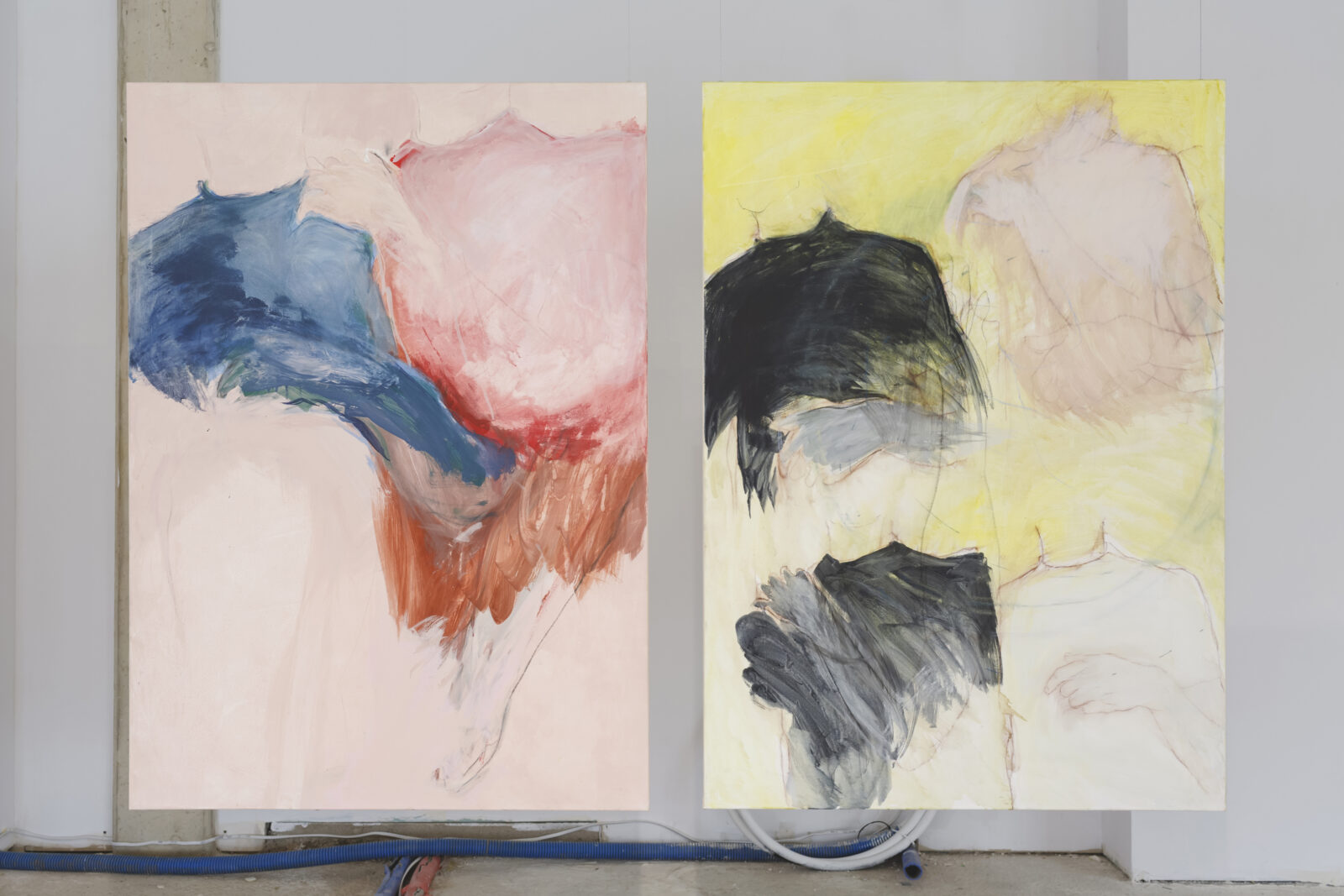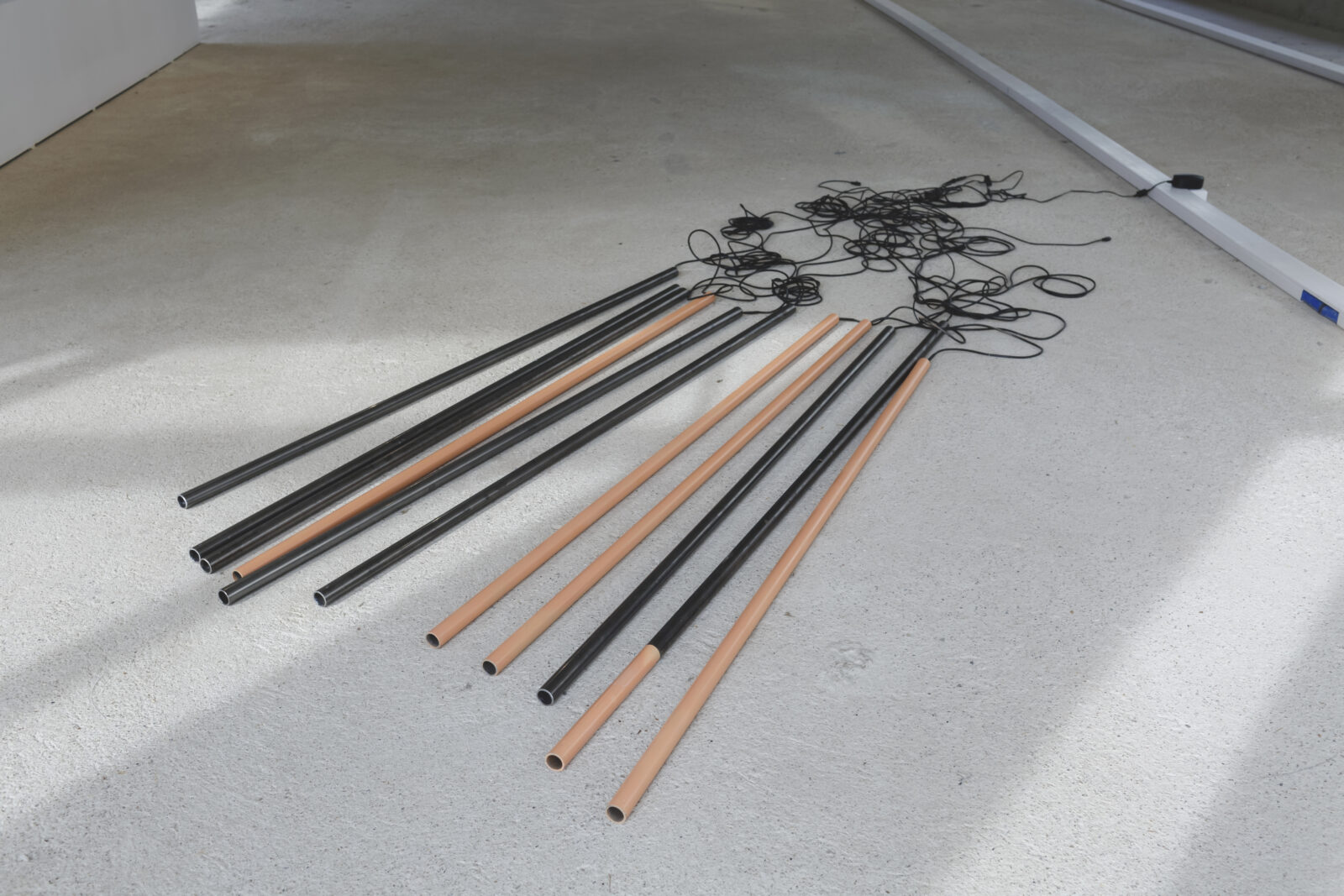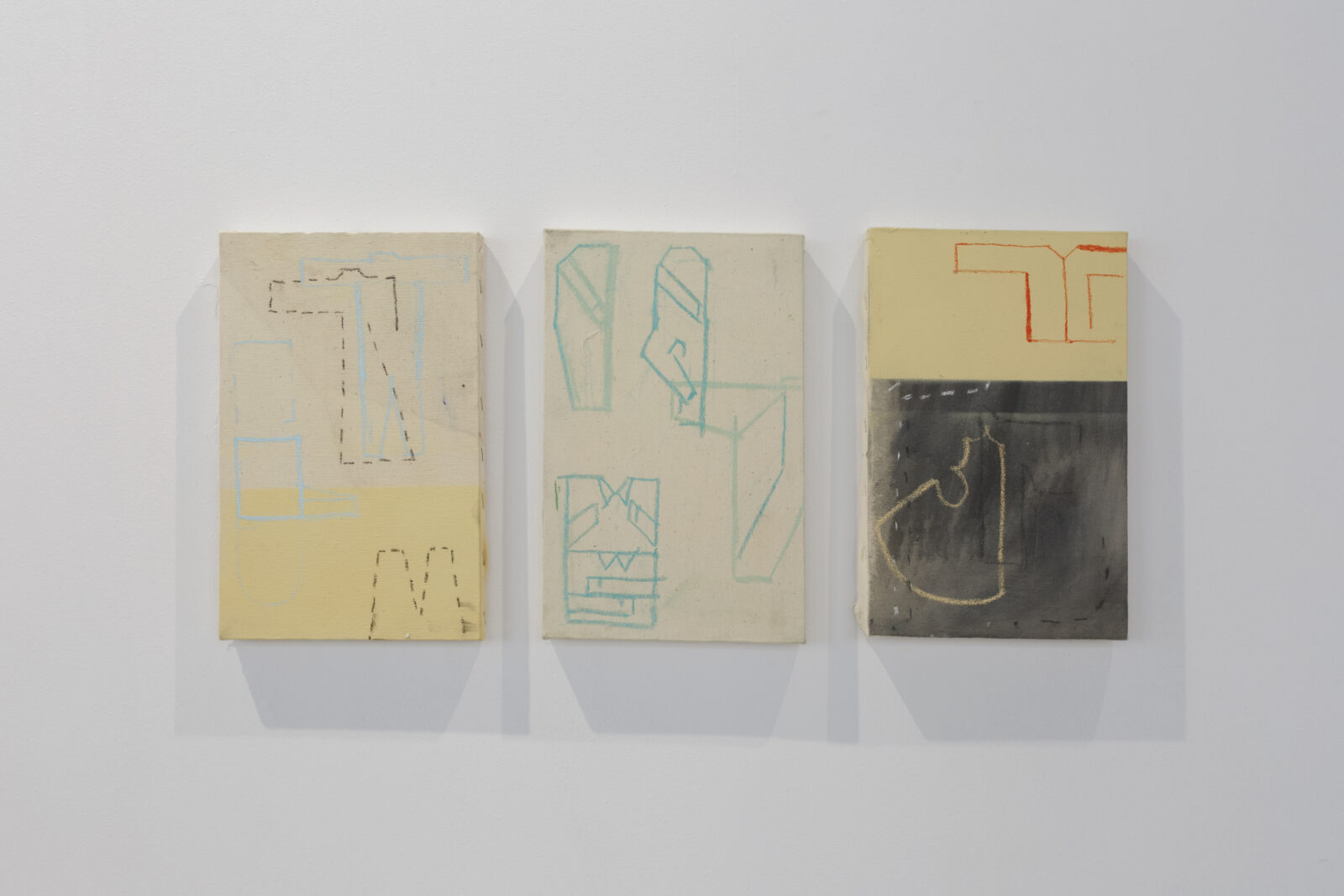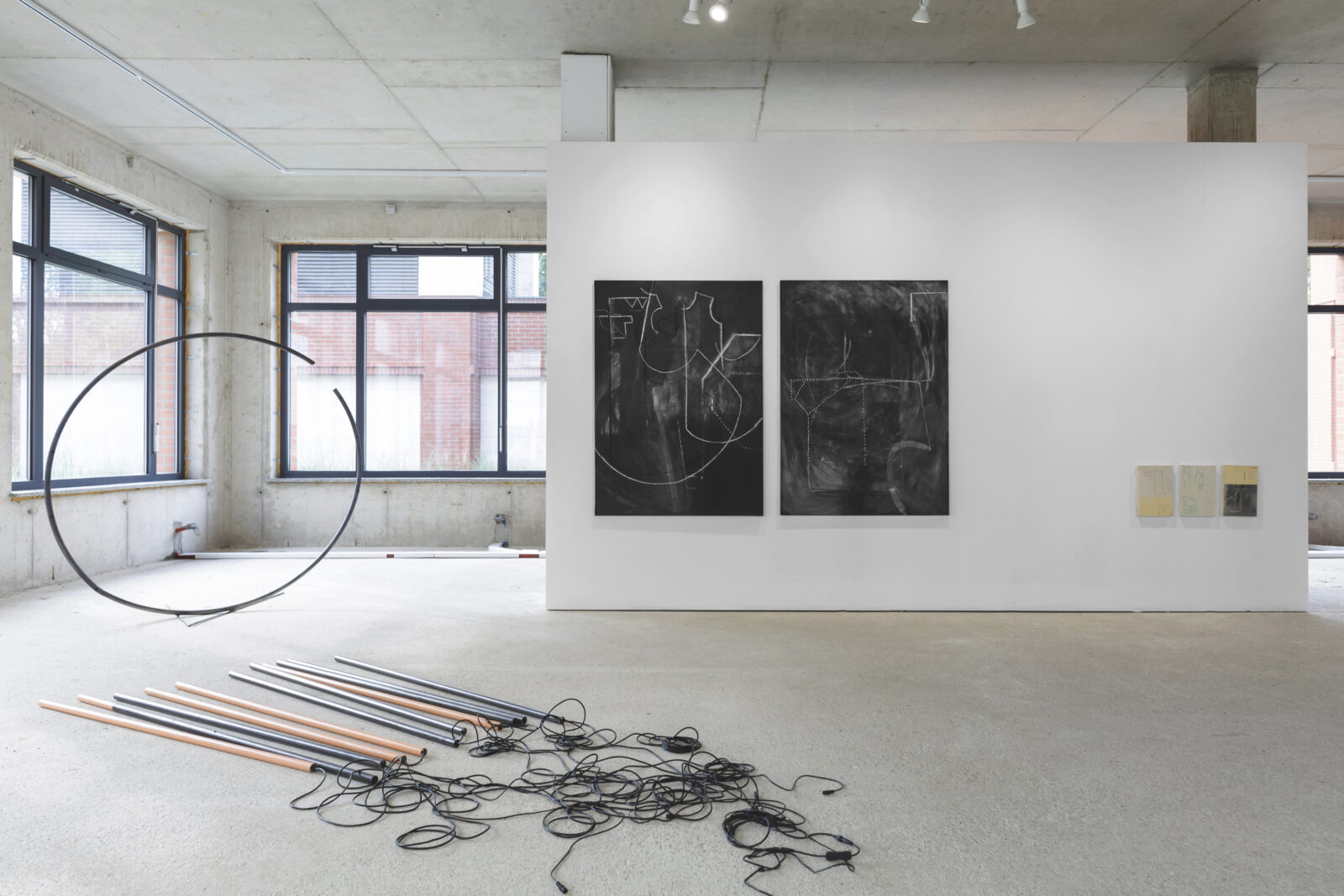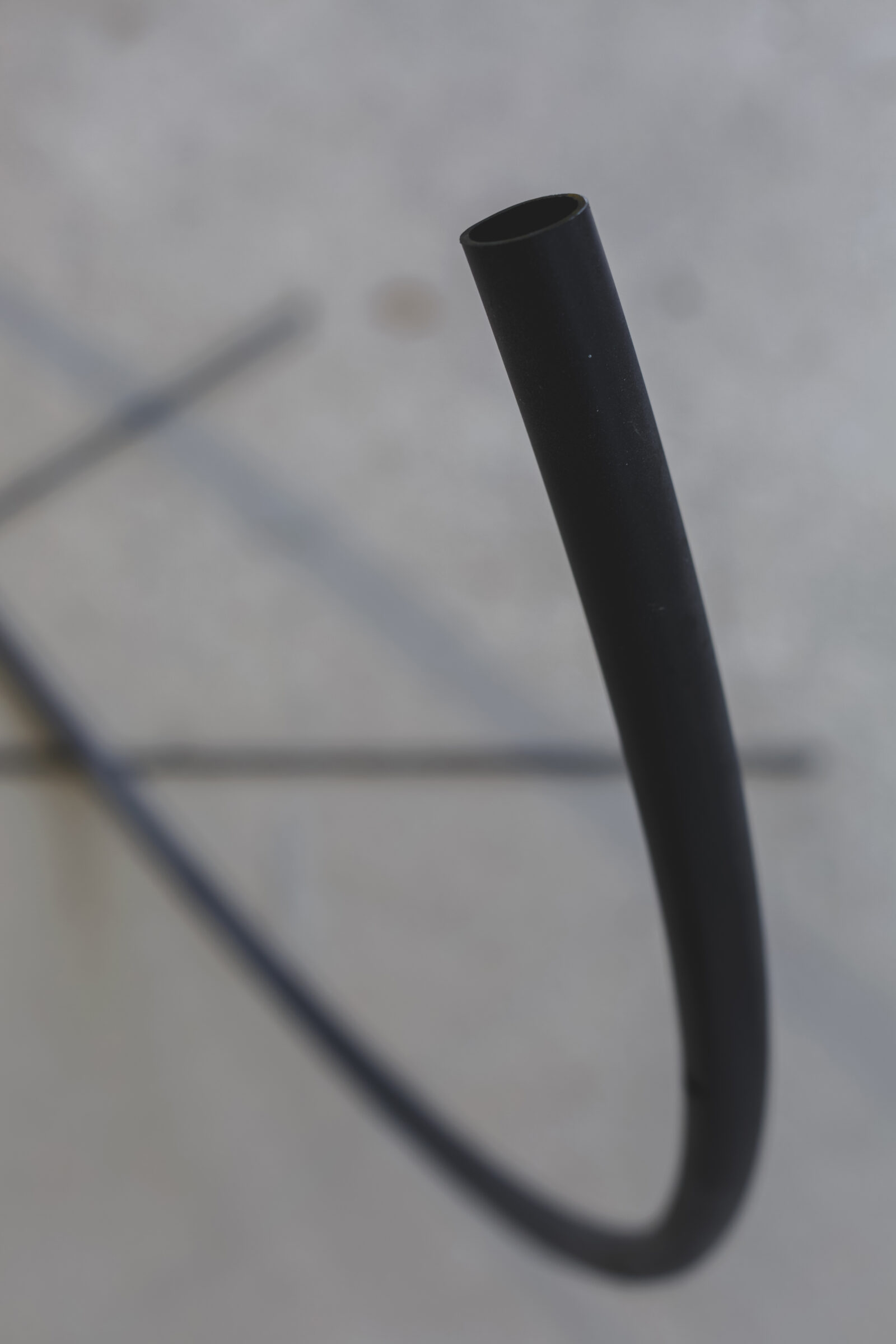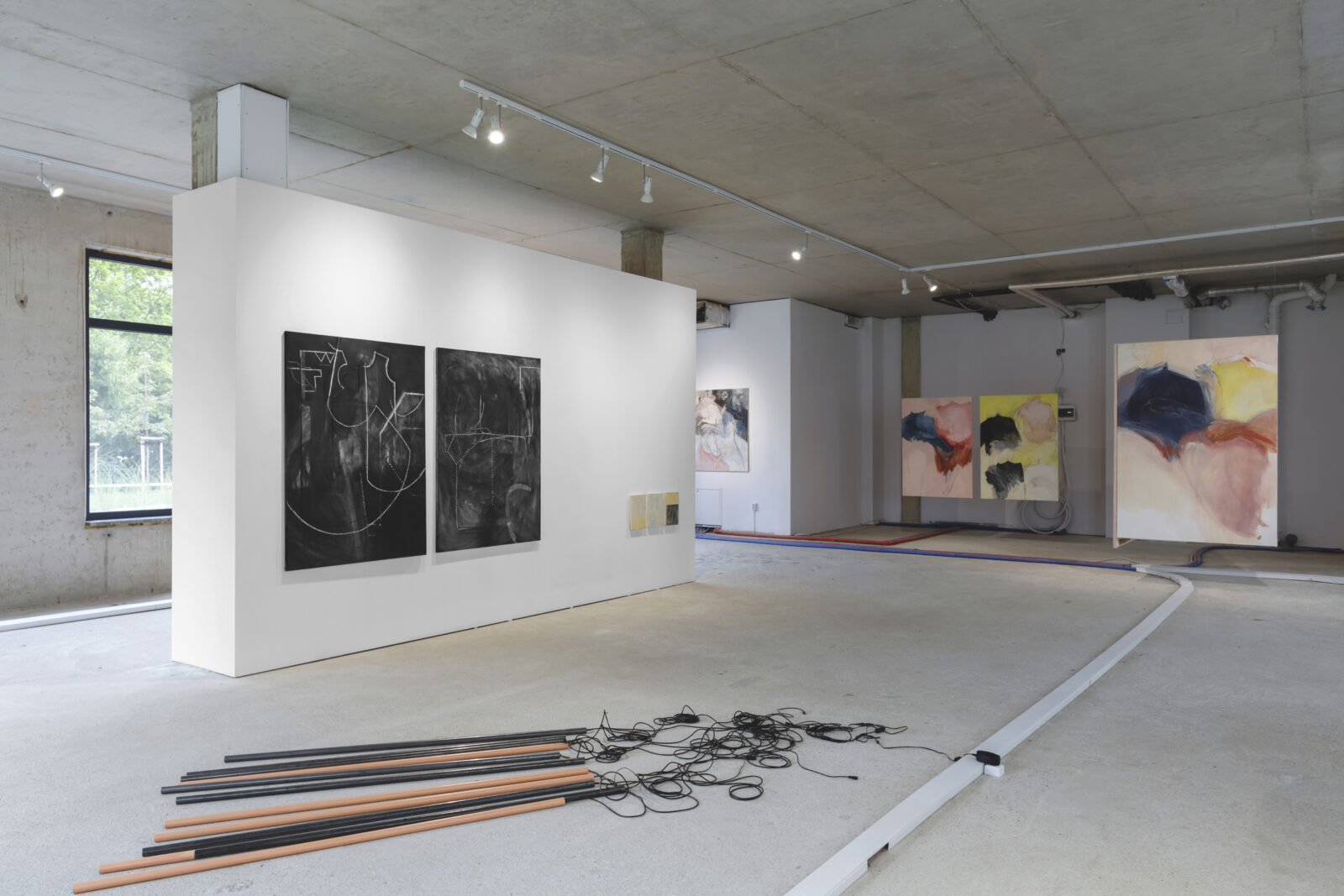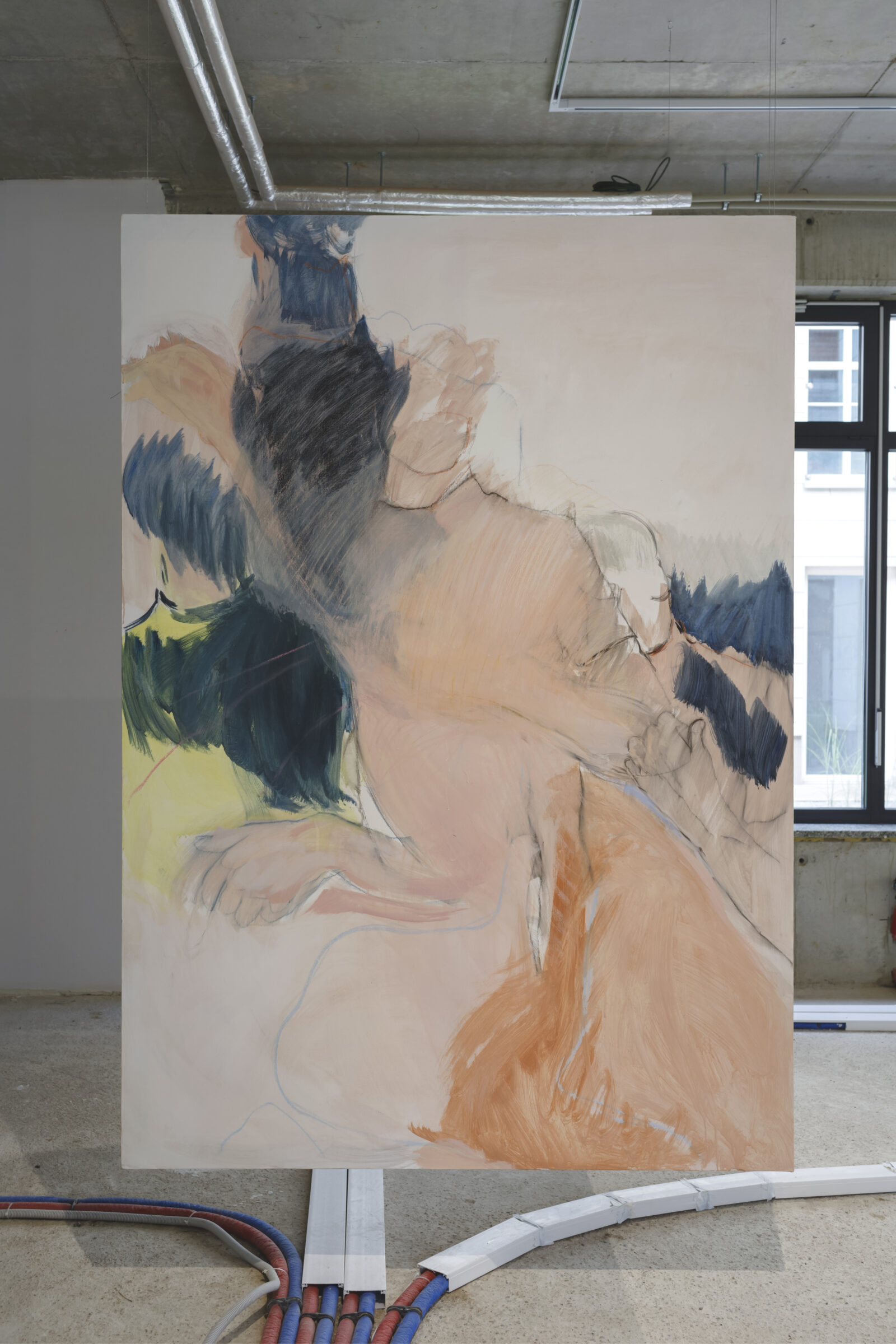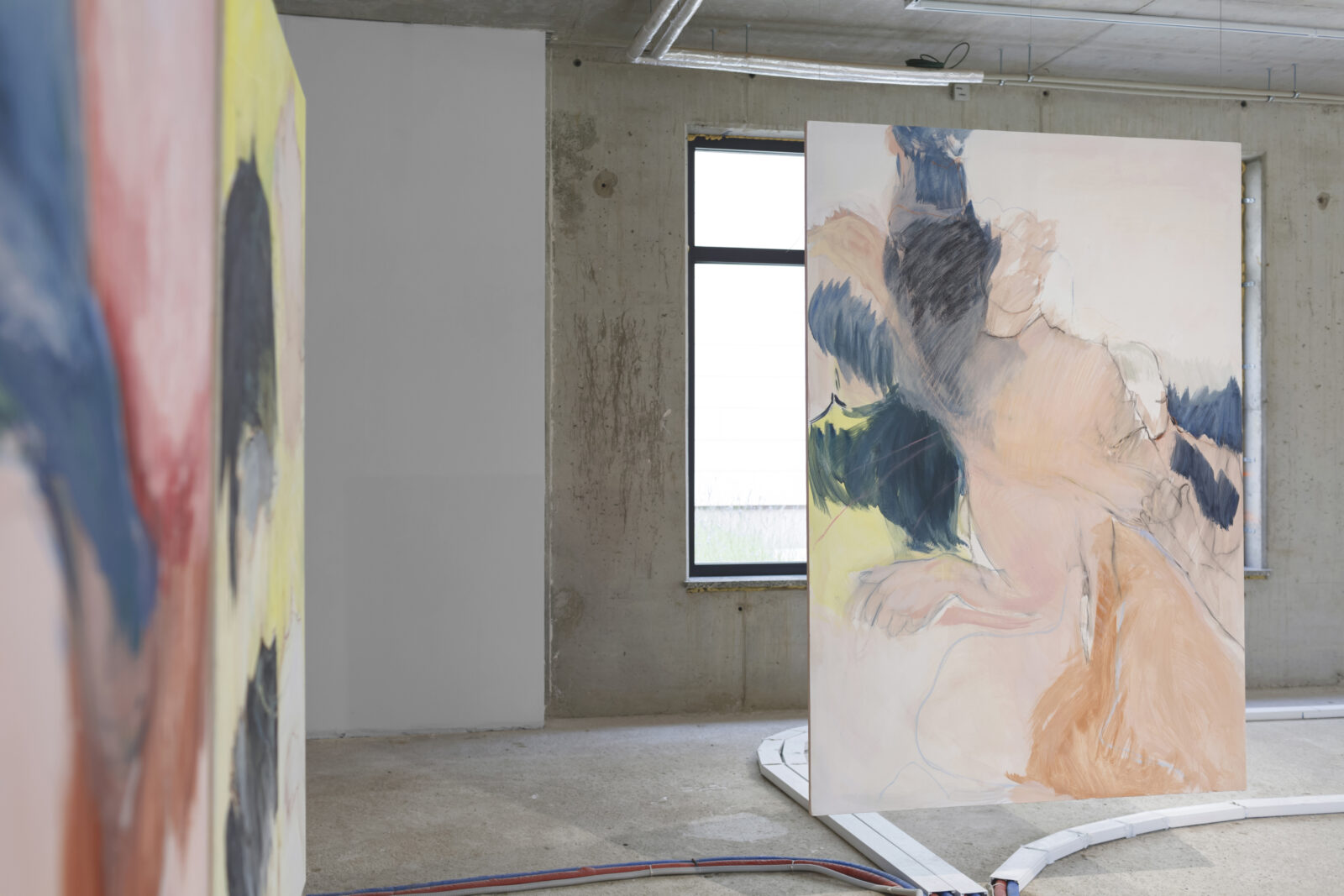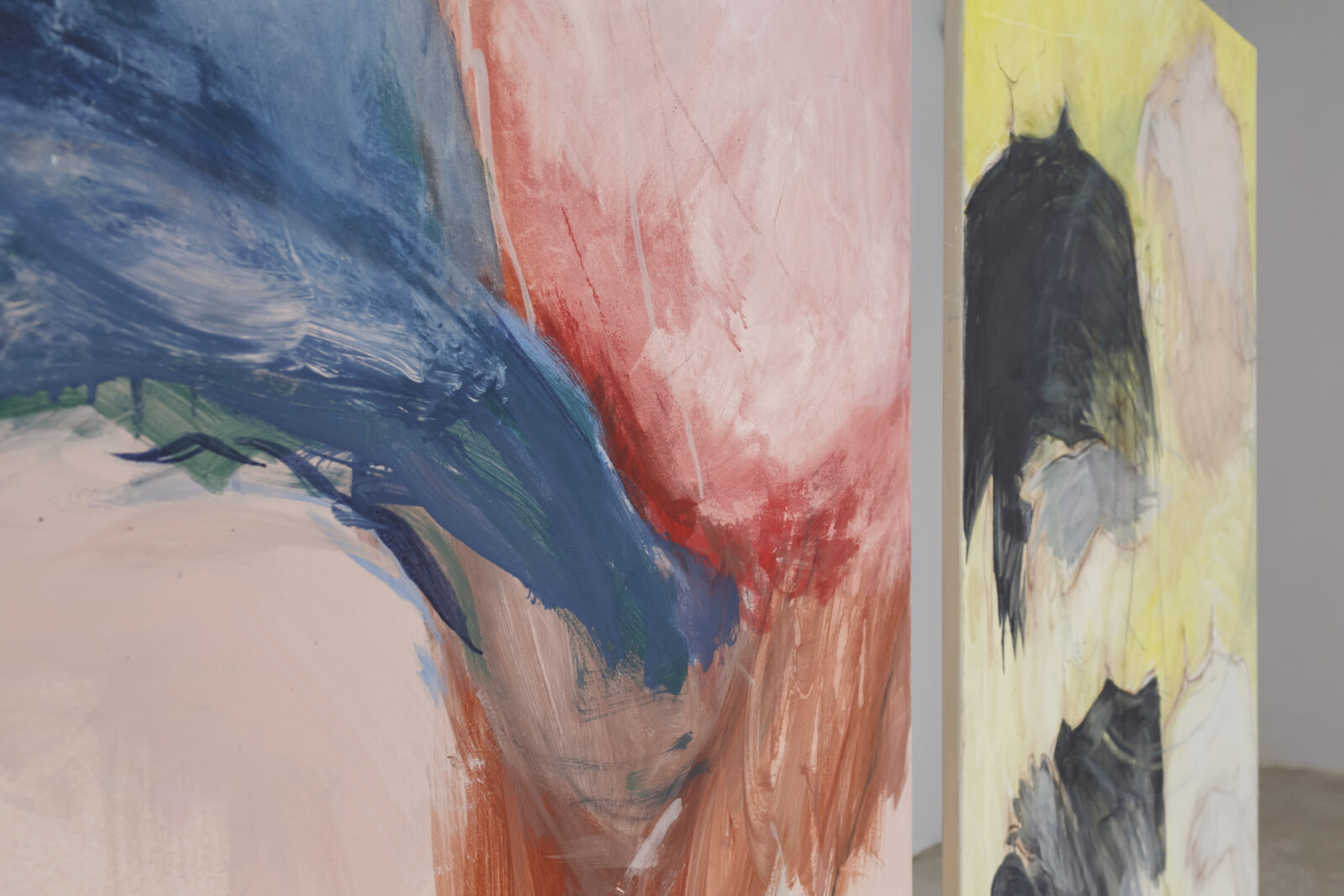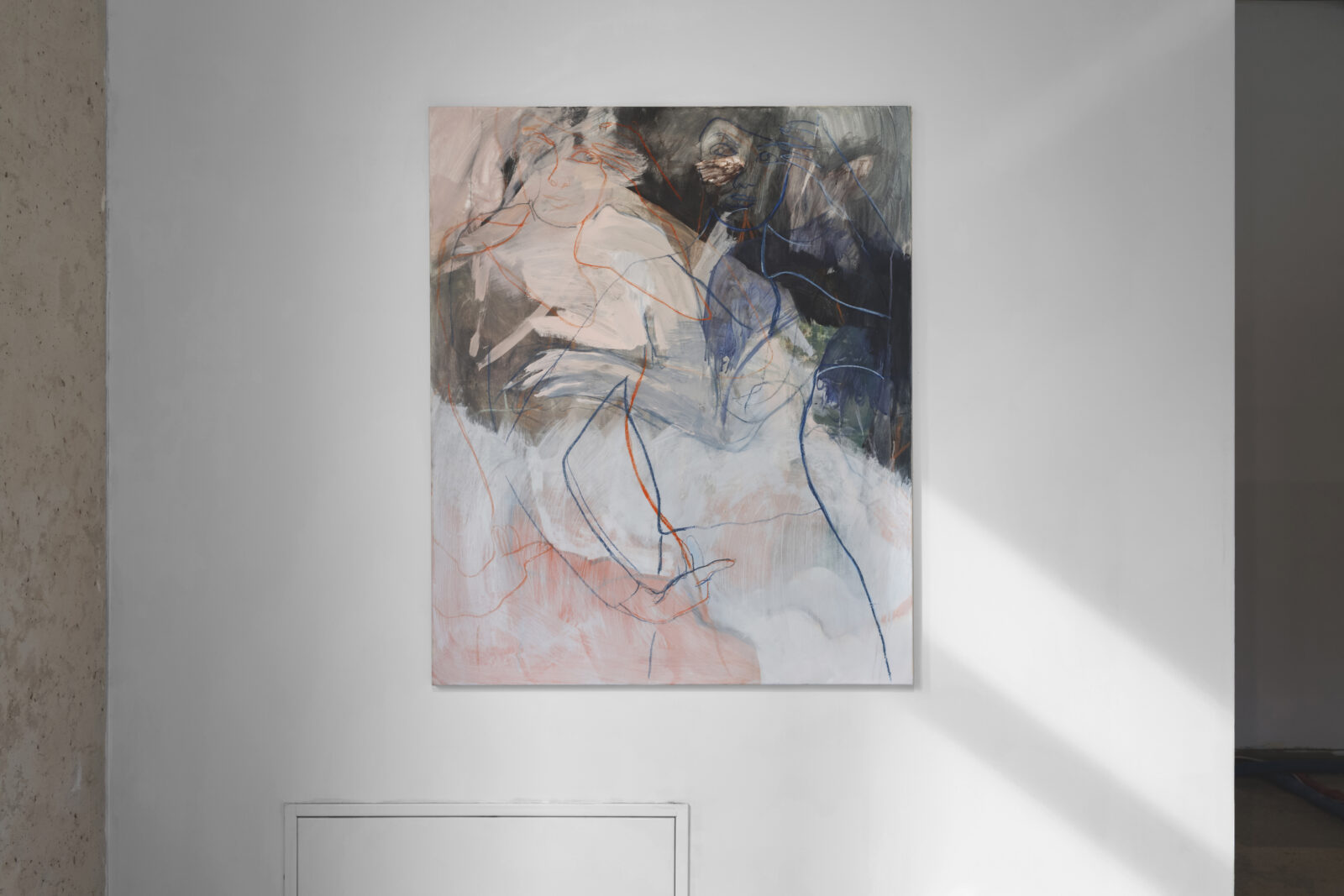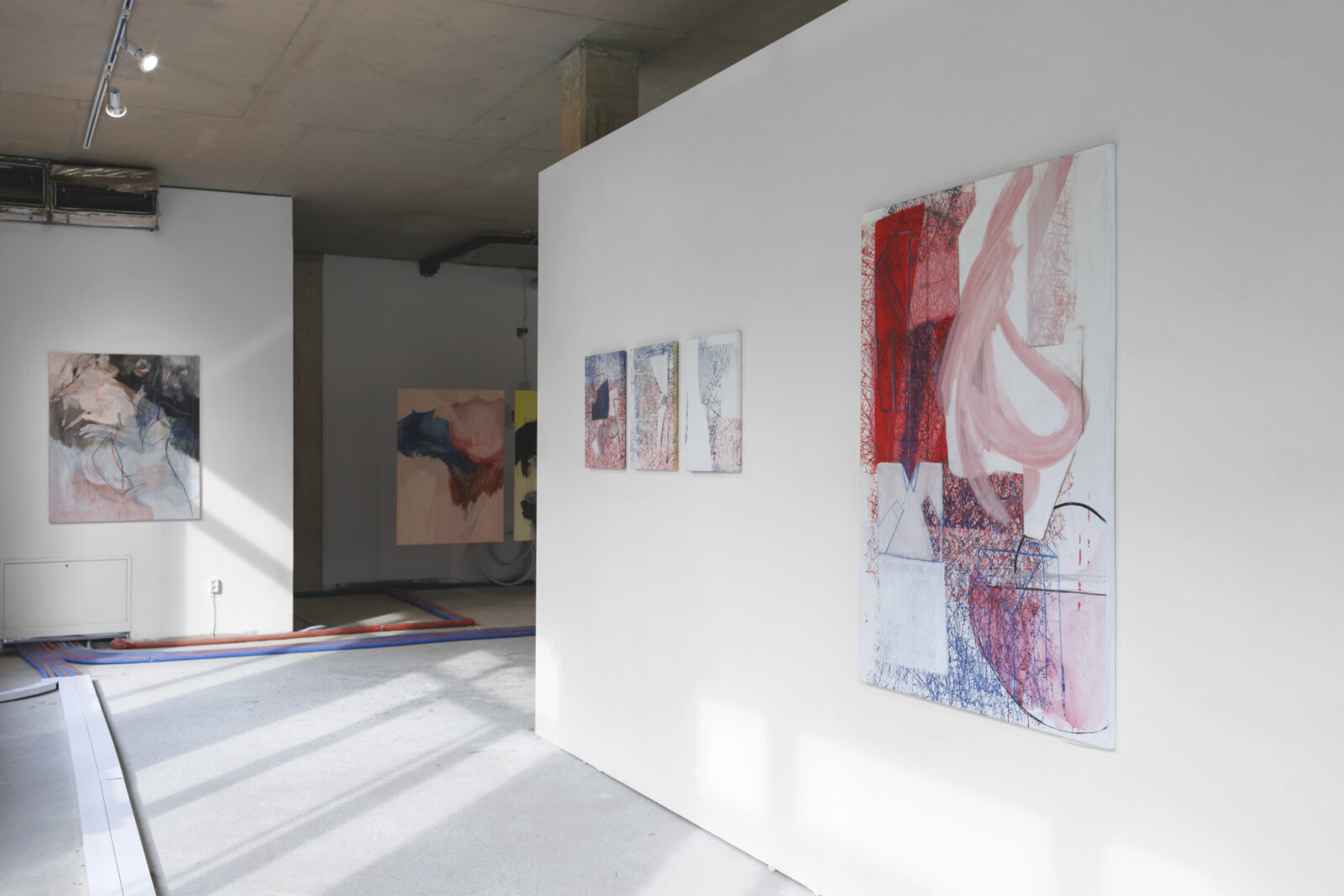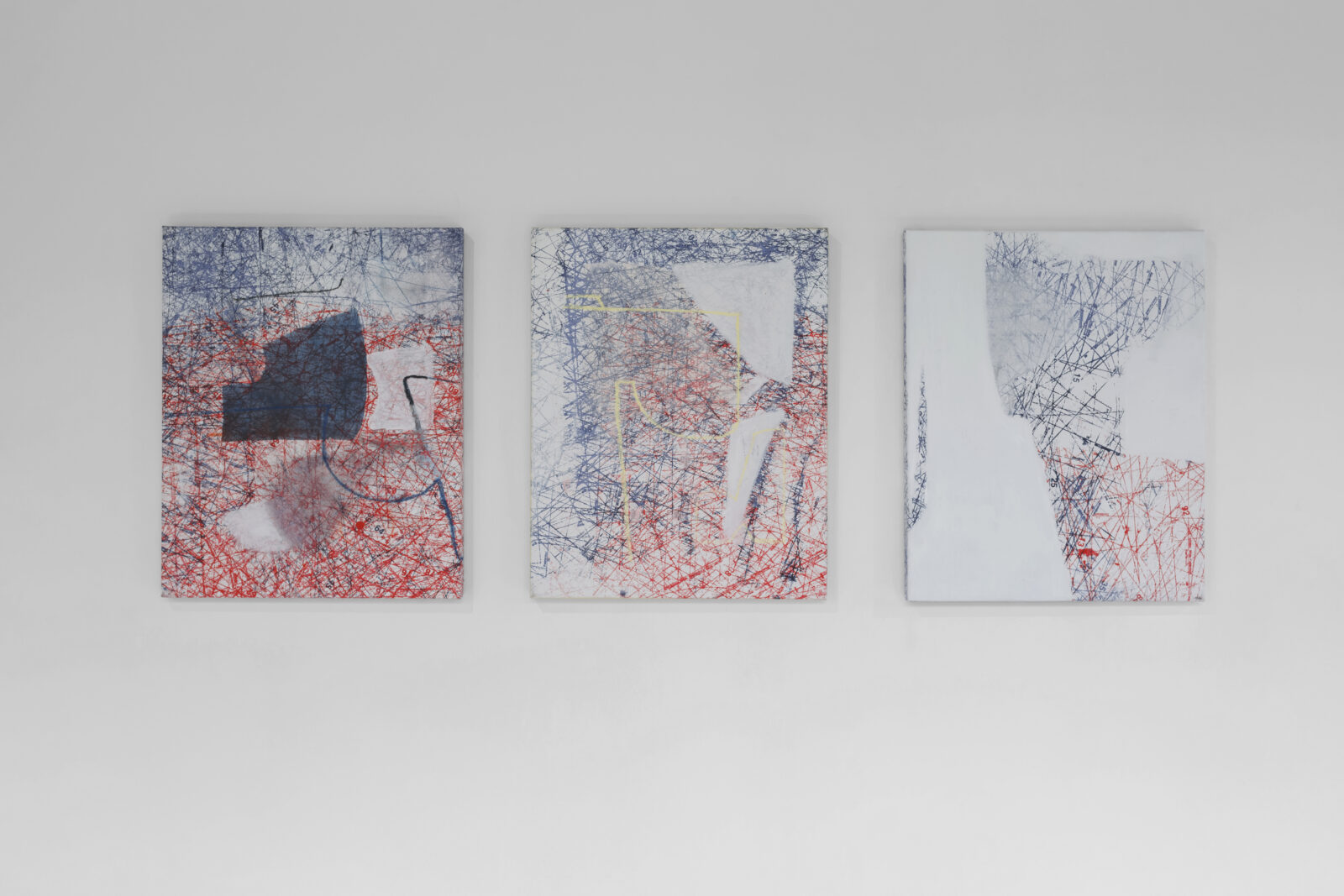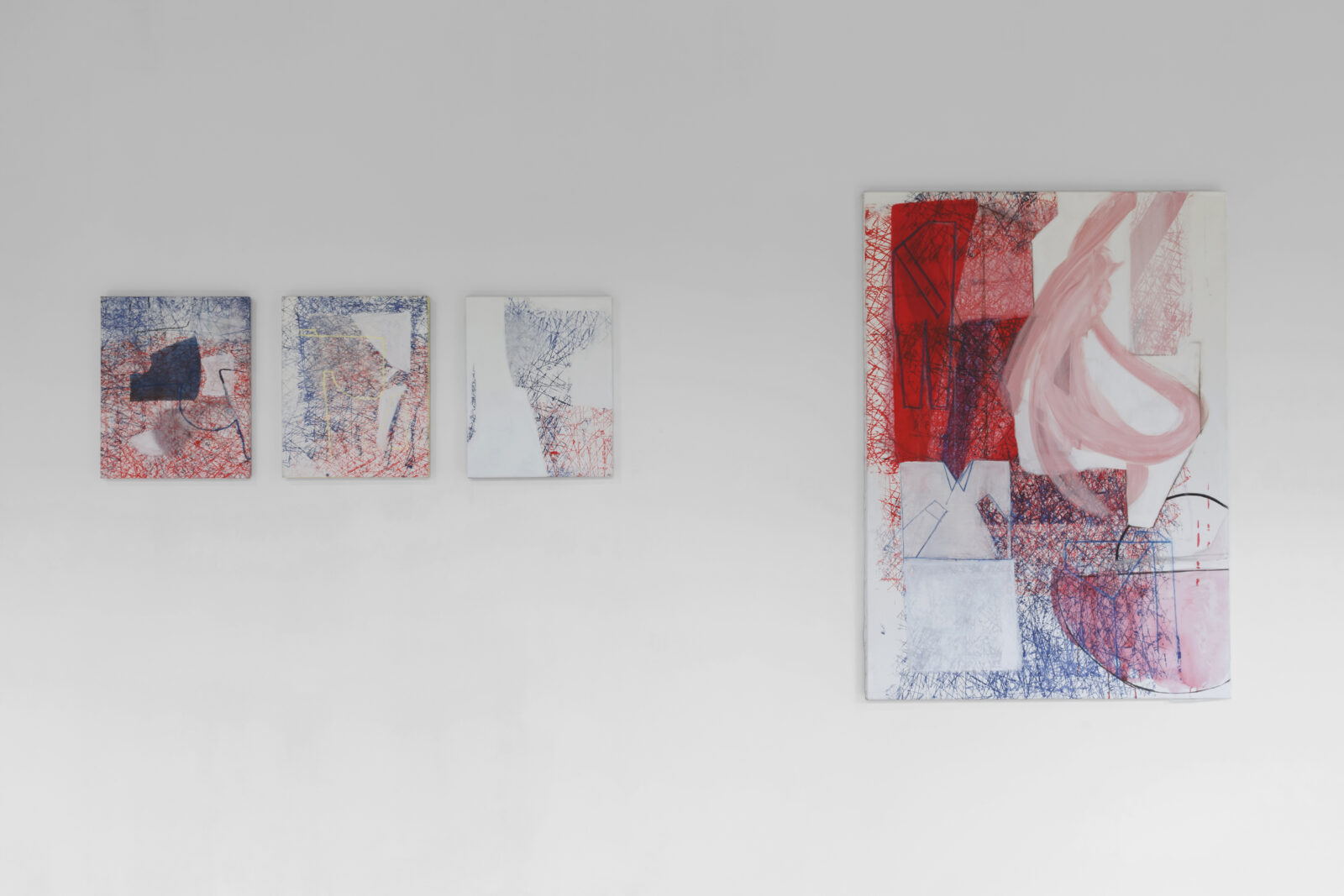Not many material objects were created as a result of the Wrocław ’70 Visual Arts Symposium – a few scale models, designs of sculptures, urban planning solutions, a catalogue and black-and-white photographs of the exhibition by Tadeusz Rolke. They show smartly dressed people with fashionable hairdos stooping over the exhibits, crossing their arms or touching their cheeks with interest. Others crane their necks to see a sculpture, shuffle their legs, draw on a cigarette or adjust their glasses. Magdalena Sadłowska is interested in this subtle choreography that takes place in the exhibition space. She observes small, barely perceptible yet repetitive gestures. Despite the passage of years, some of them remain universal, from the well-practiced rituals that our bodies follow automatically in everyday situations, such as getting dressed, combing the hair, putting on a watch, to gestures indicating excitement and agitation during important events.
There is some nervousness, sketchiness, trembling in Magdalena Sadłowska’s pastel paintings. They show multiplied bodies, formatted by gestures and fashion. Magdalena is inspired by old Polish lifestyle magazines (e.g. “Przyjaciółka”, “Świat mody”, “Sport”), shop windows of the Hoffland fashion house, how-to books for women living in the People’s Republic of Poland. In her paintings, she copies clothes patterns that used to be attached to newspapers. Today, in the era of mass production and turbocapitalism, they are forgotten relics, but in the sixties or seventies they were highly desirable because they enabled the creation of the most fashionable outfits. Sadłowska’s canvases reproduce these dress patterns or technical drawings from course books for apprentice tailors. She draws intricate maps as if she was writing with chalk on a blackboard. The geometric figures showed the trajectory of movements that had to be made in order to keep up to date with the latest canons of beauty and the metropolitan glitter of modernity. In Magdalena’s paintings, however, they lose their clarity, begin to vibrate and suddenly blur.
In her earlier series of paintings titled “Exerciser”, Sadłowska referred to physical culture, gyms, repetition of movements in pursuit of fitness and perfection. She depicted multiplied figures performing complex acrobatics, moved them around, blurred them, reaching almost a point of abstraction. For Sadłowska, the repetition of physical exercises and clothing patterns is a metaphor for something bigger – creative work, which is based on the monotonous repetition of the painting gesture, repainting, returning to the sketch in pursuit of unattainable perfection. Above all, however, Sadłowska’s work is a metaphor for culture that determines our patterns of behaviour, disciplines individuals and dictates our rhythm. As in modern anthropology of the body, the artist shows people as bodies-objects constructed and modelled by various aspects of social life. Tradition, fashion, city, power, technology – they all construct our bodies, which raises a question about the existence of individuality. Will there be even one unique gesture that we will make while visiting the exhibition? Or will we only copy the repertoire of poses, steps and choreography?

graphic design: Magdalena Jaskułowska



